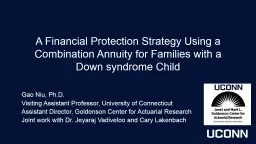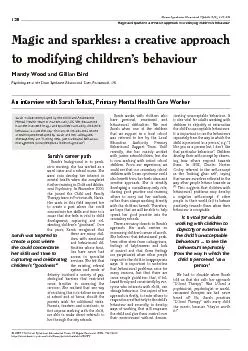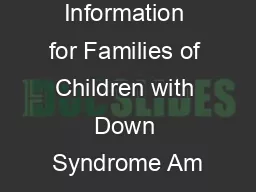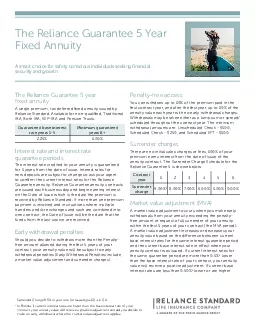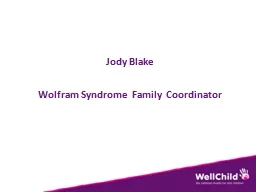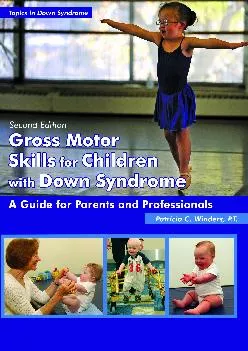PPT-A Financial Protection Strategy Using a Combination Annuity for Families with a Down syndrome
Author : pasty-toler | Published Date : 2019-02-15
Child Gao Niu PhD Visiting Assistant Professor University of Connecticut Assistant Director Goldenson Center for Actuarial Research Joint work with Dr Jeyaraj Vadiveloo
Presentation Embed Code
Download Presentation
Download Presentation The PPT/PDF document "A Financial Protection Strategy Using a ..." is the property of its rightful owner. Permission is granted to download and print the materials on this website for personal, non-commercial use only, and to display it on your personal computer provided you do not modify the materials and that you retain all copyright notices contained in the materials. By downloading content from our website, you accept the terms of this agreement.
A Financial Protection Strategy Using a Combination Annuity for Families with a Down syndrome: Transcript
Download Rules Of Document
"A Financial Protection Strategy Using a Combination Annuity for Families with a Down syndrome"The content belongs to its owner. You may download and print it for personal use, without modification, and keep all copyright notices. By downloading, you agree to these terms.
Related Documents

